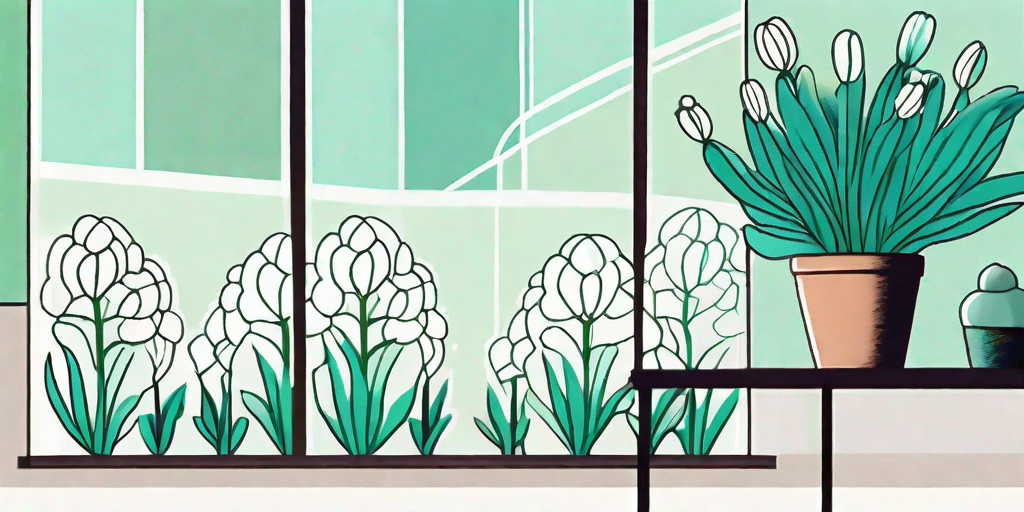
Ah, the hyacinth. A flower of such beauty and fragrance, it could make a skunk swoon. But what happens when the petals fall and the fragrance fades? Fear not, dear reader, for the hyacinth's journey doesn't end there. With the right care and a dash of your love, you can ensure your hyacinth bulbs continue to bloom year after year, bringing joy to your garden and noses everywhere.
The Life Cycle of a Hyacinth: From Bulb to Bloom and Back Again
Before we dive into the nitty-gritty of post-flowering care, let's take a moment to understand the life cycle of a hyacinth. Like a well-written novel, it has a beginning, middle, and end, with each stage playing a crucial role in the flower's development.
The story begins underground, with a bulb. This bulb is a storage organ, packed with all the nutrients the hyacinth needs to grow. When the conditions are right, the bulb sends up a shoot, which eventually blossoms into a beautiful, fragrant flower. After the flower fades, the bulb enters a period of dormancy, where it replenishes its nutrient stores for the next growing season.
The Importance of Post-Flowering Care
Now, you might be thinking, "If the bulb does all the work, why do I need to bother with post-flowering care?" Well, just like you wouldn't run a marathon without proper training, a hyacinth bulb shouldn't be expected to bloom again without some TLC. Post-flowering care helps the bulb replenish its nutrient stores and prepares it for the next growing season.
Without proper care, the bulb might not bloom the following year, or the flowers might be smaller and less fragrant. And let's be honest, nobody wants a garden full of underperforming hyacinths.
How to Care for Your Hyacinth After Flowering
So, how exactly do you care for a hyacinth after it's done flowering? Don't worry, it's not rocket science. With a few simple steps, you can ensure your hyacinths continue to bloom and smell amazing year after year.
Here's a step-by-step guide to hyacinth care after flowering:
- Deadhead the Flower: Once the flower has faded, remove it from the plant. This prevents the plant from wasting energy on seed production and encourages it to focus on replenishing the bulb's nutrient stores.
- Leave the Leaves: Resist the urge to tidy up your garden by removing the hyacinth's leaves. These leaves are the plant's solar panels, absorbing sunlight and converting it into energy for the bulb.
- Water Wisely: Hyacinths don't like to have wet feet. Water your plants sparingly, allowing the soil to dry out between waterings.
- Feed Your Flowers: Give your hyacinths a nutrient boost with a high-potassium fertilizer. This will help the bulb replenish its nutrient stores and prepare for the next growing season.
- Let Them Rest: After the leaves have died back, allow the bulbs to rest in the ground for a few months. This period of dormancy is crucial for the bulb's development.
Common Questions About Hyacinth Care
Now that we've covered the basics, let's tackle some of the most common questions about hyacinth care. Because let's face it, we all have questions, and there's no such thing as a silly question when it comes to gardening.
Should I Dig Up My Hyacinth Bulbs?
Whether or not to dig up your hyacinth bulbs after flowering is a matter of personal preference. Some gardeners prefer to leave the bulbs in the ground, while others dig them up and store them in a cool, dry place. If you choose to dig up your bulbs, make sure to do so after the leaves have died back and the bulb has entered dormancy.
If you live in a region with harsh winters, it might be best to dig up your bulbs and store them indoors. This will protect them from freezing temperatures and ensure they're ready to bloom again come springtime.
Why Aren't My Hyacinths Blooming?
If your hyacinths aren't blooming, it could be due to a number of factors. Perhaps the bulbs didn't get enough nutrients or water during the growing season. Or maybe they were planted in a location with too much shade. It could also be that the bulbs are too old and need to be replaced. Remember, gardening is a bit like detective work. Sometimes, you need to play Sherlock Holmes to figure out what's going wrong.
Conclusion
And there you have it, folks! Your comprehensive guide to hyacinth care after flowering. With a bit of love and care, your hyacinths can continue to bloom and fill your garden with their intoxicating fragrance year after year. So, roll up your sleeves, put on your gardening gloves, and get ready to show your hyacinths some love. Happy gardening!















